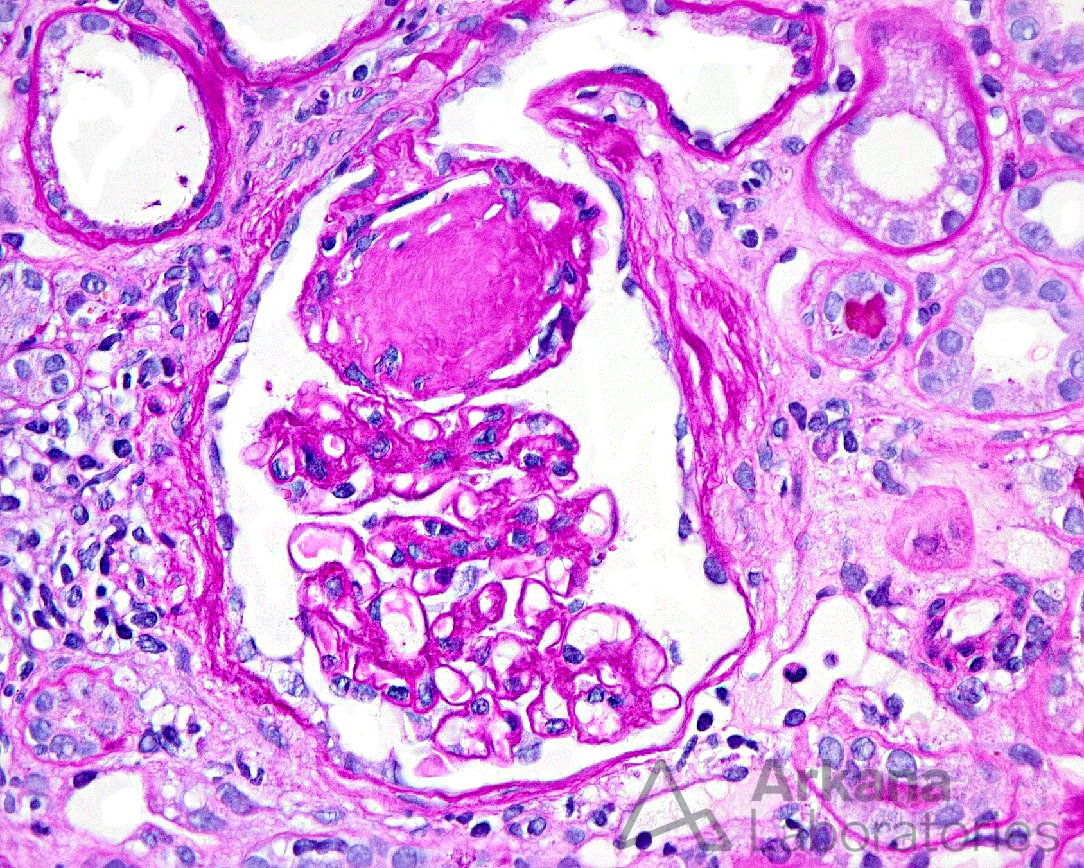What is your diagnosis in a patient (non-smoker) with worsening proteinuria and a negative immunofluorescence panel?
Answer: The light microscopic image of a PAS-stain demonstrates severe, nodular glomerulosclerosis compatible with nodular diabetic glomerulopathy, RPS class III. Clinically, the patient carried a diagnosis of type II diabetes for >10 years with a recent hemoglobin A1c of 12%. Of note, in the absence of diabetes, nodular glomerulosclerosis can also be seen in what is known as idiopathic nodular glomerulosclerosis, thought to be secondary to hypertension and/or smoking (see references). While light chain deposition disease can also lead to a nodular sclerosis pattern of injury, the immunofluorescence panel was negative in this case and no deposits were present by electron microscopy.
References:
Markowitz GS, Lin J, et al. Idiopathic Nodular Glomerulosclerosis is a Distinct Clinical Pathologic Entity Linked to Hypertension and Smoking. Human Pathology 2002 August; 33 (a): 826-35.
Nasr S, D’Agati V. Nodular Glomerulosclerosis in the Non-diabetic Smoker. J Am Soc Nephrol 2007; 18: 2032-2036.
Quick note: This post is to be used for informational purposes only and does not constitute medical or health advice. Each person should consult their own doctor with respect to matters referenced. Arkana Laboratories assumes no liability for actions taken in reliance upon the information contained herein.

